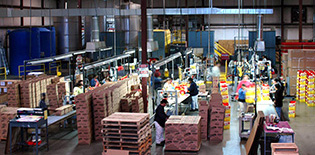Organization
North Dakota Department of Agriculture
Challenge
The state legislature transferred responsibility for anhydrous ammonia regulation from the state Insurance Department to the Department of Agriculture. The existing system was paper-based
and inefficient, and the transfer made this a perfect time to switch to automation.
Solution
The Kelly State Inspection and Investigation System (KSIIS) satisfied Agriculture’s need for a cost-effective, simple method of capturing data electronically in the field for database storage and reporting.
Results
Agriculture has increased and broadened inspections, responds in real-time to questions by pulling up full inspection records, and generates accurate, on-demand reports on completed inspections.
The Need to Automate Agriculture Inspections
Until two years ago, the North Dakota Insurance Department performed all inspections of anhydrous ammonia storage facilities, and the separate North Dakota Department of Agriculture issued regulatory responses. This separation caused multiple issues:
- Agriculture was writing enforcement letters to entities it had never visited, dependent entirely on second-hand information from Insurance.
- Insurance would sometimes issue verbal warnings and compliance assistance that Agriculture was unaware of, leading to mixed signals.
- The regulated public frequently voiced frustration at not knowing where to go with questions.
- Because the overall system was largely manual, it was difficult to generate reports showing what had been inspected and determined to be in compliance, and what had not.
To address coordination issues, the state legislature transferred inspection responsibility to Agriculture, which saw an opportunity to automate. The old Insurance method of handling inspection data consisted of inspectors filling out paper forms that were scanned back at the office for storage as images, but not accessible data. Agriculture wanted to capture data electronically and store it in a usable form for easy reference and report generation. After evaluating options, Agriculture decided KSIIS was the solution it needed, including electronic data capture in the field on tablet PCs.


